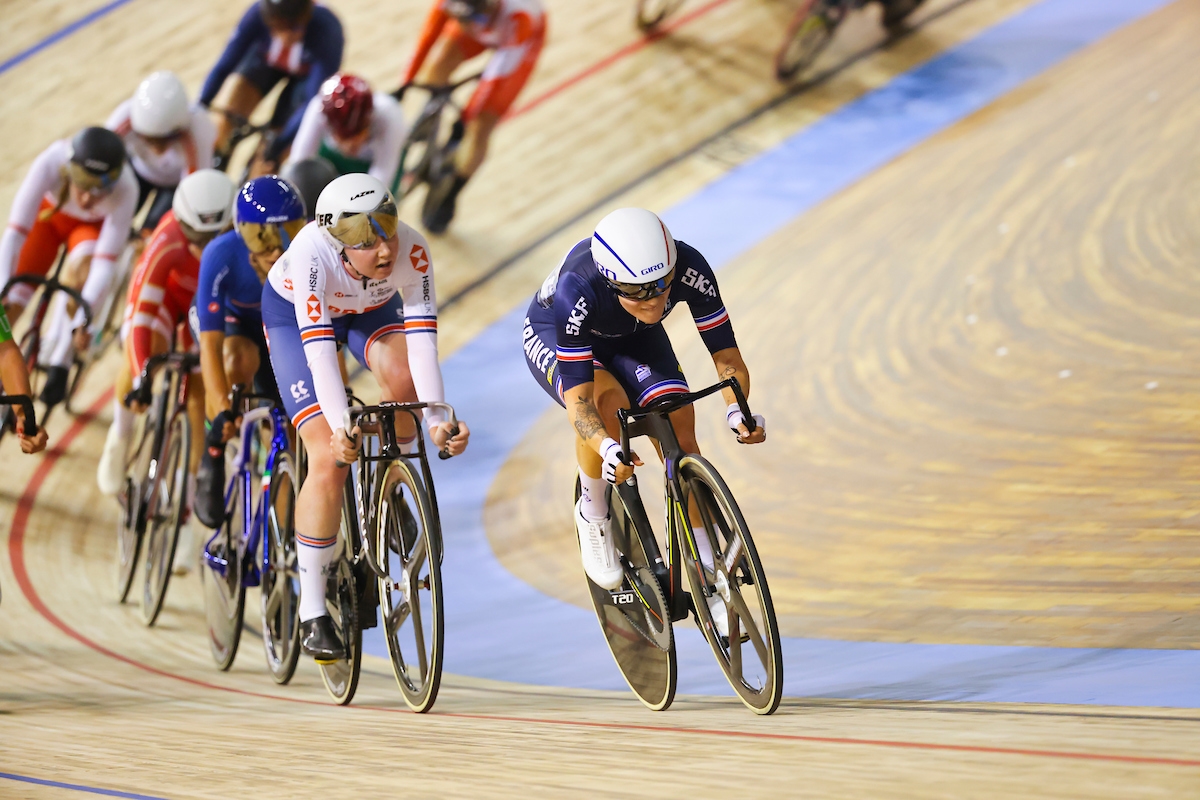
The Omnium is the newest event in track cycling, having only been introduced ahead of the 2012 Olympic Games for both men and women. Since then, the format has changed from six events to four.
The Omnium came about after the International Olympic Committee required gender parity in events but did not allow for more medals for cycling. The omnium replaced the individual pursuit, points race and kilometre time trial (500m time trial for women) and combined them all into one medal event, to a great outcry from the sport.
The idea of an Omnium in track cycling wasn't new in 2012, however. Famed Six Day racer Patrick Sercu lobbied the UCI to have the discipline reintroduced to the World Championships schedule in 2007 after a 40-year absence.
The first Omniums consisted of a 200m flying Time Trial, Individual Pursuit, Points Race and Kilometre (or 500m) Time Trial, the discipline was intended to test riders' versatility.
By the time the Omnium made its first Olympic appearance in London, two more mass-start events had been added: the Scratch Race and Elimination Race, making it cycling's equivalent of the pentathlon.
Laura Kenny (Great Britain) claimed the Omnium gold medals in London and Rio, while Lasse Norman Hansen (Denmark) and Elia Viviani (Italy) won the men's events in 2012 and 2016, respectively. Great Britain's Matt Walls took gold at Tokyo, 2020, while Jennifer Valente (USA) topped the women's podium.
The timed events were, to be honest, not particularly exciting and the UCI spiced up the track menu after Rio, announcing the Omnium would be reduced to four events, all mass-start, to make room for the reintroduced Madison in the Olympic programme.
The Omnium is now four races: the Scratch Race, Tempo Race, Elimination Race and Points Race. Riders accumulate points through high finishes in the first three events - with 40 points awarded to the winner, 38 for second, 36 for third, etc. The rider with the most points at the end of four races wins.
Scratch Race
It seems like a simple concept, and indeed the Omnium event starts off straightforward: in the Scratch Race, the first rider across the line wins – there are no extra points for lapping the field. The men races are 10 kilometres, the women 7.5km.
Tempo Race
From there, it gets far more complicated and more strategic. In the Tempo Race, riders gain points in sprints and by lapping the field and the rider with the most points at the finish wins.
The field gets four laps to settle in, then there is a sprint every lap where the first rider across the line gets one point, including on the final sprint. But if a rider laps the field, they get 20 points – so there is a big incentive to break away.
However, riders who are dropped from the field and are lapped lose 20 points, so it's a test of endurance in a race that never lulls and a test for the jury, who has to decide what the 'field' is when riders are scattered all over the track.
Elimination Race
The events all happen on the same day of competition (the men on August 5, women on August 8) so riders must be able to recover from these short, intense efforts. In the Elimination Race, there are sprints every other lap – but watch the back of the field! The last rider across the line is eliminated and must leave the track.
The riders' bikes are fitted with a light that sits on their stem and blinks to indicate they are eliminated but there is often some confusion if riders don't get the message. The jury can relegate, warn or disqualify riders if they don't leave the track after being eliminated.
Gaining a lap doesn't count, so this is the one race where riding tempo at the front can be a benefit, and often the favourites will spend the race on or near the front, riding in the wind rather than saving energy but risking elimination at the back.
Points Race
Riders carry all of their accumulated points into the final event, the Points Race, a 25km race for men (100 laps), 20km for women (80), with sprints every 10 laps worth 5, 3, 2 and 1 points mid-race and 10, 6, 4, 2 at the finish.
If a rider laps the field, they gain 20 points and if they are dropped from the field and lapped, they lose 20 points – all added or subtracted to everything they've earned throughout the four races.
The rider with the most points at the finish wins the Omnium, making the scoreboard the VIP of the track cycling event.
History
After the UCI changed the format and added the four-race Omnium to the UCI Track World Championships programme, the Points Race has become the game-changer.
In 2017, Alberto Torres led the first three races but France's Benjamin Thomas won 25 points in sprints to claim the rainbow jersey and New Zealand's Aaron Gate lapped the field twice and gained 15 points in sprints to move ahead of Torres into second.
Campbell Stewart (New Zealand) used a similar strategy to win the Omnium world title in 2019, while Thomas returned to the rainbow jersey thanks to lapping the field with the right combination in 2020.
Katie Archibald (Great Britain) used her sprint prowess to hold off the charge from Kirsten Wild (Netherlands) that year. Wild, an expert points racer, won the Omnium in 2018 and 2019, too.







